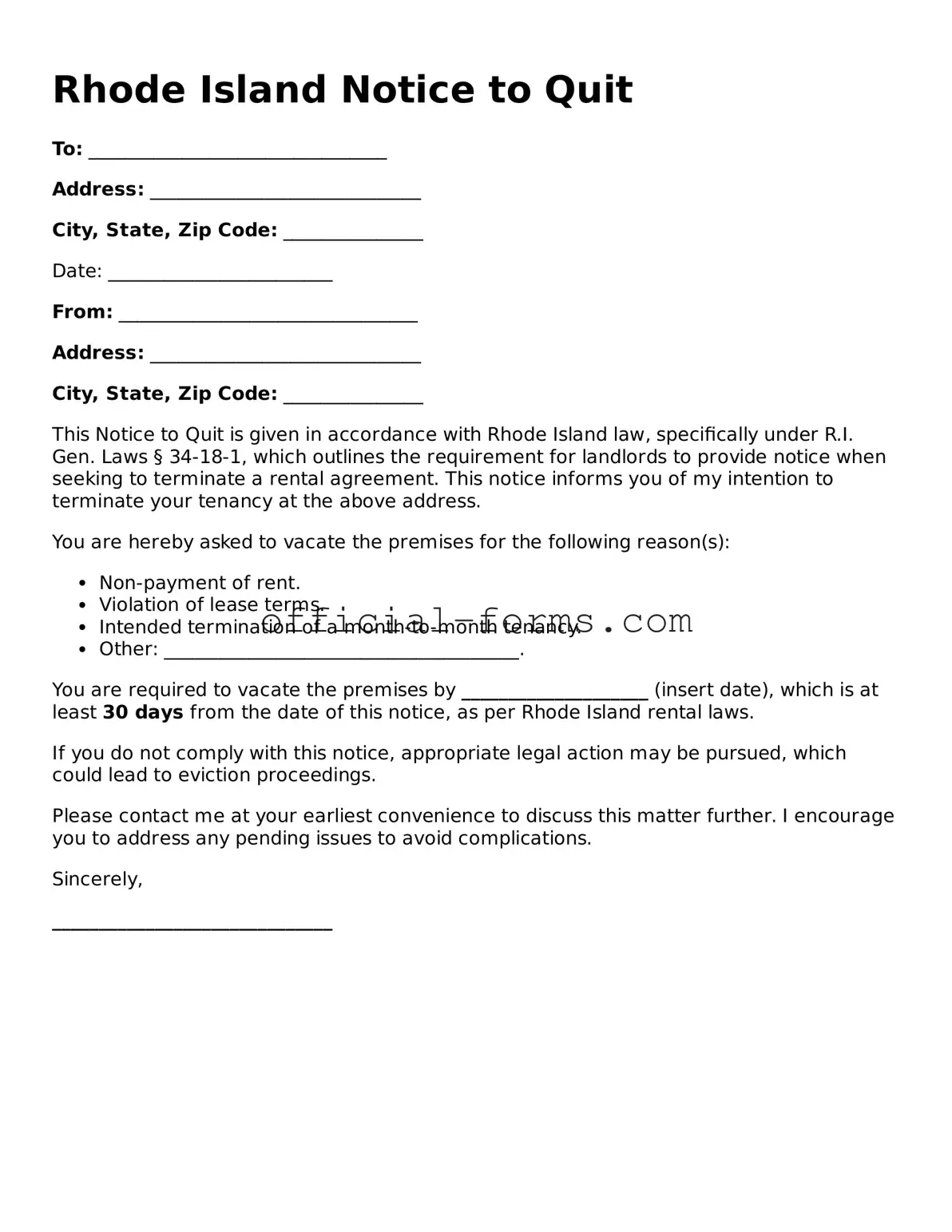The Rhode Island Notice to Quit form serves as a crucial document in the landlord-tenant relationship, particularly when it comes to the process of eviction. This form is typically utilized by landlords who wish to terminate a lease agreement, signaling to tenants that they must vacate the premises. It outlines essential details, such as the reason for eviction, the timeframe within which the tenant must leave, and any specific instructions regarding the return of property. Understanding the nuances of this form is vital for both landlords and tenants, as it helps ensure that all parties are aware of their rights and responsibilities. Properly completing and serving this notice is a legal requirement in Rhode Island, and failure to do so can lead to complications in the eviction process. Additionally, the form must comply with state laws, which dictate the necessary language and format, ensuring clarity and legality in the communication. Whether you are a landlord preparing to reclaim your property or a tenant facing eviction, familiarity with the Notice to Quit form is essential for navigating this often challenging situation.
